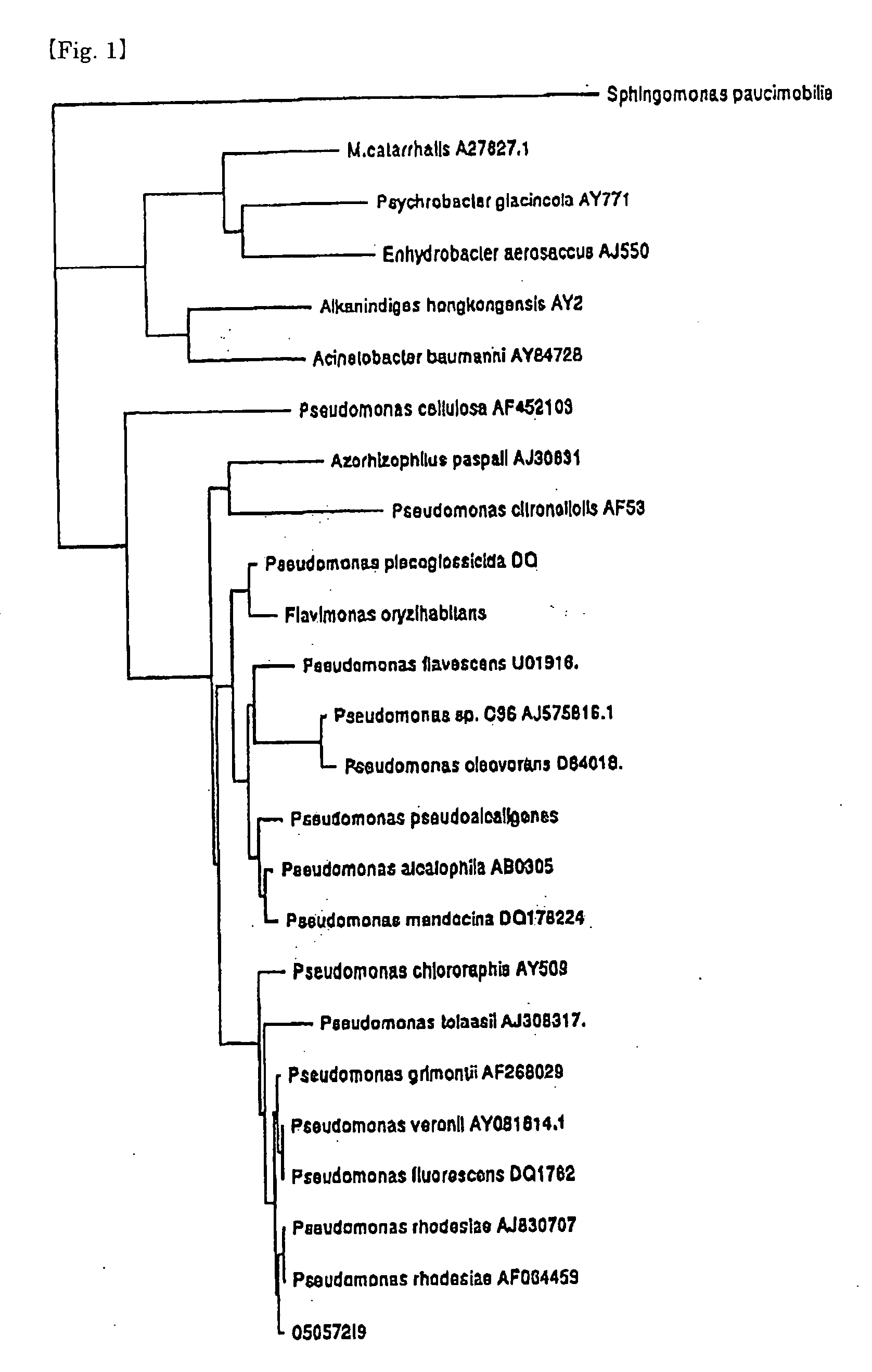Microorganism capable of controlling plant diseases and plant disease-controlling agent using the microorganism
a technology of plant diseases and microorganisms, which is applied in the direction of microorganisms, biocide, bacteria based processes, etc., can solve the problems of limited timing and target crops, bacterial pathogen resistance to antibiotics, and restricted use of antibiotics, so as to reduce the possibility of resistance to pathogenic bacteria, reduce the burden on the environment, and improve the effect of control ability
- Summary
- Abstract
- Description
- Claims
- Application Information
AI Technical Summary
Benefits of technology
Problems solved by technology
Method used
Image
Examples
example 1
Identification of the Bacteria and Preparation of a Plant Disease Controlling Wettable Powder Composition
1. Selection of a Strain Having Controlling Ability Against Bacterial Soft Rot of Lettuce
[0046]Lettuce leaves collected in the farm field were homogenized in a small amount of sterilized water. The suspension thus obtained was coated onto a Standard method agar (0.5% (w / v) Casein Peptone, 0.25% (x / v) yeast extract, 0.1% (w / v) glucose, 1.5% (w / v) agar, pH 6.9-7.1 after the sterilization) (NISSUI PHARMACEUTICAL CO. LTD.) and cultured for 2 days at 25° C. Colonies of the grown microorganisms were collected, which were further separated and obtained as a single colony. Plural strains of the microorganisms thus obtained underwent a test for assessing controlling effect against bacterial soft rot of lettuce (indoor test) as described in the following Examples, for selecting strains of microorganisms having controlling effect against a pathogenic strain of lettuce bacterial soft rot (Er...
PUM
 Login to View More
Login to View More Abstract
Description
Claims
Application Information
 Login to View More
Login to View More - R&D Engineer
- R&D Manager
- IP Professional
- Industry Leading Data Capabilities
- Powerful AI technology
- Patent DNA Extraction
Browse by: Latest US Patents, China's latest patents, Technical Efficacy Thesaurus, Application Domain, Technology Topic, Popular Technical Reports.
© 2024 PatSnap. All rights reserved.Legal|Privacy policy|Modern Slavery Act Transparency Statement|Sitemap|About US| Contact US: help@patsnap.com










